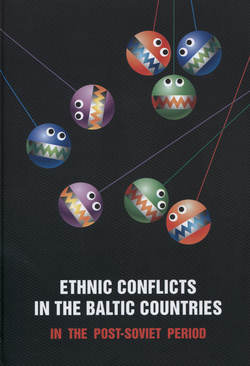Читать книгу Ethnic Conflicts in the Baltic States in Post-soviet Period - Сборник статей - Страница 19
На сайте Литреса книга снята с продажи.
Historical memory in electoral behaviour in Latvia
Andrei Vladimirovich Solopenko, M.Soc.Sc., SKDS, Latvia
Overall and territorial characteristic of Latvian population
ОглавлениеAccording to the population census, as of 1 March 2011 the population of Latvia was 2,070,371 people, of those 1,285,136 (62.1 %) Latvians; 557,119 (26.9 %) Russians; 68,202 (3.3 %) Byelorussians; 45,798 (2.2 %) Ukrainians; 44,772 (2.2 %) Poles; 24,479 (1.2 %) Lithuanians.[17] However, according to the results of the population census, mainly people in Latvia speak either Latvian or Russian at home. Among all people who have answered about their language, 62.1 % mainly use Latvian at home, 37.2 % use Russian and only 0.7 % use other languages.[18] Based on that, we can state that all population of Latvia can be provisionally divided into two large groups: Latvian-speaking and Russian-speaking.
This conclusion was confirmed by the monthly population survey Omnibus conducted by SKDS Centre, which included the questions regarding both respondent’s ethnic background and the language of communication used in his/her family. The respondents were asked: “What language do you mainly speak at home?” and only one of three options (Latvian, Russian, other) could be selected. The respondents were also asked: “What is your ethnic background?” and also only one of three options (Latvian, Russian, other) could be selected. Comparing the responses to the above two questions, we can see that the amount of ethnic Latvians and those who speak Latvian at home is almost the same. However, those who use Russian, include not only ethnic Russians, but also people of other ethnic backgrounds. The respondents using other language of communication at home account for about 1 %; therefore, in the author’s opinion, they can be excluded from the consideration, as their share is negligible and will not affect the outcome. The author also believes that it is possible to conclude that Latvians mainly use Latvian for communication and Russians mainly use Russian language.
At the same time, the distribution of these groups across Latvia is not uniform. A large share of Latvian-speaking population mainly lives in rural areas and small towns. At the same time, most Russians live in Riga, several areas around it and in the east of the country, in Latagle (see Fig. 1).
Fig. 1. Share of people with dominant language used in the family.
Looking at the above map, we can see that most of the Latvian-speaking people mainly live in rural areas of Kurzeme, in the western part of the country, except coastal Liepaja and Ventspils, where their share is smaller. There is also a relatively large share of Latvian-speaking people in rural areas of Vidzeme, in northern part of the country. In many cities of Latvia (Ventspils, Jekabpils, Jelgava, Liepaja, Jurmala), the share of Latvian-speaking people is about 50–60 %, which indicates that a large number of Russian-speaking people live there. In Latvian capital Riga and to main cities of Latgale, Daugavpils and Rezekne, Russian-speaking population constitute a majority. In addition, it is a majority in five southeastern regions of Latgale.
Territorial distribution of the two main communities of the country also clearly shows the territorial division between them. In Latvia, its capital Riga and Latgale, the eastern part of the country, stand out. A substantial share of Russian-speaking population is typical for those areas. 69.5 % of all Russian-speaking public live in the areas where they constitute a majority. Al the same time, over half of all Latvian-speaking population also live in the areas where they are a majority. This factor indicates the formation of two social spaces, Latvian and Russian, which hardly overlap at all. Subsequently, different historical memories are formed in the two communities, which, when formed in the families, can be transferred to further generations. That is why in the next chapter the author looks at how Latvian – and Russian-speaking people in Latvia interpret various historical events.
17
http://data.csb.gov.lv/DATABASE/tautassk_11/2011.gada%20tautas%20skaitīšanas%20galīgie%20rezultāti/2011.gada%20tautas%20skaitīšanas%20galīgie%20rezultāti.asp Table TSG11-06 (see 11/05/2013)
18
Ibid., Table TSG11-07 (see 11/05/2013).
